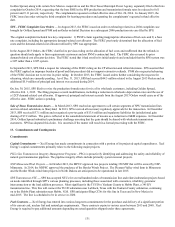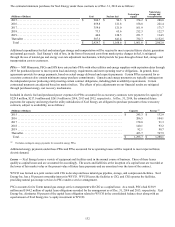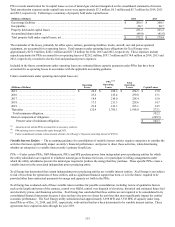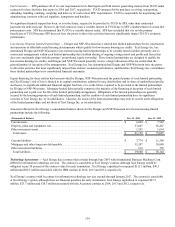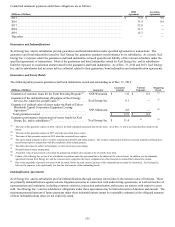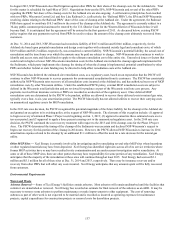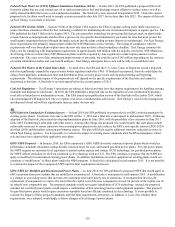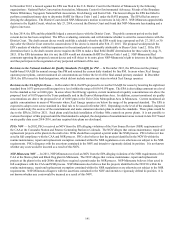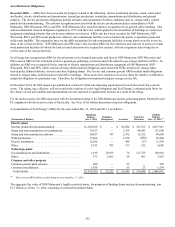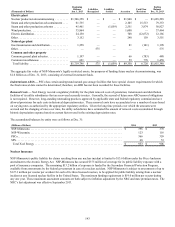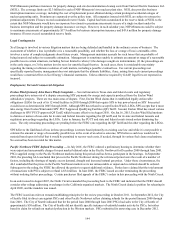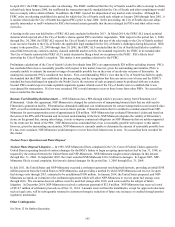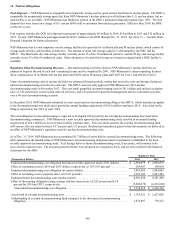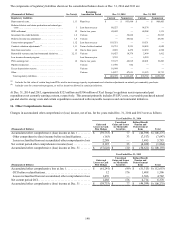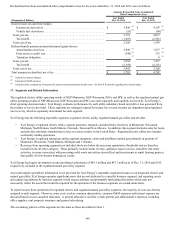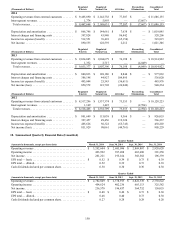Xcel Energy 2014 Annual Report Download - page 158
Download and view the complete annual report
Please find page 158 of the 2014 Xcel Energy annual report below. You can navigate through the pages in the report by either clicking on the pages listed below, or by using the keyword search tool below to find specific information within the annual report.
140
In March 2013, WildEarth Guardians petitioned the U.S. Court of Appeals for the 10th Circuit to review the EPA’s decision approving
the Colorado SIP. WildEarth Guardians has stated it will challenge the BART determination made for Comanche Units 1 and 2. In
comments before the EPA, WildEarth Guardians urged that current emission limitations be made more stringent or that SCR be added
to the units. In September 2014, the EPA filed a request with the Court to remand the case to the EPA for additional explanation of the
EPA’s decision approving the BART determination for Comanche Units 1 and 2. In October 2014, the Court granted the EPA’s request
and vacated the current briefing schedule. The EPA has provided required status reports.
In 2010, two environmental groups petitioned the DOI to certify that 12 coal-fired boilers and one coal-fired cement kiln in Colorado
are contributing to visibility problems in Rocky Mountain National Park. The following PSCo plants are named in the petition:
Cherokee, Hayden, Pawnee and Valmont. The groups allege the Colorado BART rule is inadequate to satisfy the CAA mandate of
ensuring reasonable further progress towards restoring natural visibility conditions in the park. It is not known when the DOI will rule
on the petition.
NSP-Minnesota
In 2009, the MPCA approved a SIP (the Minnesota SIP) and submitted it to the EPA for approval. The MPCA’s source-specific BART
limits for Sherco Units 1 and 2 require combustion controls for NOx and scrubber upgrades for SO2. The MPCA concluded SCRs
should not be required because the minor visibility benefits derived from SCRs do not outweigh the substantial costs. The combustion
controls were installed first and the scrubber upgrades were completed in December 2014. These emission controls cost $46.6
million. NSP-Minnesota anticipates these costs will be fully recoverable in rates.
After the CSAPR was adopted in 2011, the MPCA supplemented its Minnesota SIP, determining that CSAPR meets BART
requirements, but also implementing its source-specific BART determination for Sherco Units 1 and 2 from the 2009 Minnesota SIP.
In June 2012, the EPA approved the Minnesota SIP for EGUs and also approved the source-specific emission limits for Sherco Units 1
and 2 as strengthening the Minnesota SIP, but avoided characterizing them as BART limits.
In August 2012, the National Parks Conservation Association, Sierra Club, Voyageurs National Park Association, Friends of the
Boundary Waters Wilderness, Minnesota Center for Environmental Advocacy and Fresh Energy appealed the EPA’s approval of the
Minnesota SIP to the U.S. Court of Appeals for the Eighth Circuit (Eighth Circuit). NSP-Minnesota and other regulated parties were
denied intervention. In June 2013, the Eighth Circuit ordered this case to be held in abeyance until the U.S. Supreme Court decided
the CSAPR case. In October 2014, the Eighth Circuit set a briefing schedule that will be completed in early 2015. An argument date
has not been set. If this litigation ultimately results in further EPA proceedings concerning the Minnesota SIP, such proceedings may
consider whether SCRs should be required for Sherco Units 1 and 2.
SPS
Harrington Units 1 and 2 are potentially subject to BART. Texas developed a SIP (the Texas SIP) that finds the CAIR equal to BART
for EGUs. As a result, no additional controls beyond CAIR compliance would be required. In May 2012, the EPA deferred its review
of the Texas SIP in its final rule allowing states to find that CSAPR compliance meets BART requirements for EGUs. In December
2014, the EPA proposed to approve the BART portion of the Texas SIP, with the exception that the EPA would substitute CSAPR
compliance for Texas’ reliance on CAIR. The EPA currently plans to issue its final rule in August 2015.
In May 2014, the EPA issued a request for information under the CAA related to SO2 control equipment at Tolk Units 1 and 2. In its
December 2014 proposal, the EPA plans to disapprove the reasonable progress portions of the Texas SIP and instead adopt a Federal
Implementation Plan. For SPS, the EPA proposed to require dry scrubbers on both Tolk units to reduce SO2 emissions to help achieve
reasonable progress goals the EPA would establish for Texas and Oklahoma national parks and wilderness areas. As proposed, the dry
scrubbers would need to be installed and operating within five years of the EPA’s final action, currently expected in August 2015. SPS
plans to file comments objecting to the installation of dry scrubbers on the units. Whether dry scrubbers are required is dependent on
the EPA’s final decision. If required, they would cost approximately $600 million, with an annual operating cost of approximately
$10.4 million.
Reasonably Attributable Visibility Impairment (RAVI) — RAVI is intended to address observable impairment from a specific source
such as distinct, identifiable plumes from a source’s stack to a national park. In 2009, the DOI certified that a portion of the visibility
impairment in Voyageurs and Isle Royale National Parks is reasonably attributable to emissions from NSP-Minnesota’s Sherco Units 1
and 2. The EPA is required to make its own determination whether there is RAVI-type impairment in these parks and examine which
sources may cause or contribute to any RAVI impact that is identified. After studying the national parks and evaluating multiple
sources, if the EPA finds that Sherco Units 1 and 2 cause or contribute to RAVI in the national parks, the EPA would then evaluate
whether the level of controls required by the MPCA is appropriate. The EPA has stated it plans to issue a separate notice on the issue
of BART for Sherco Units 1 and 2 under the RAVI program.



